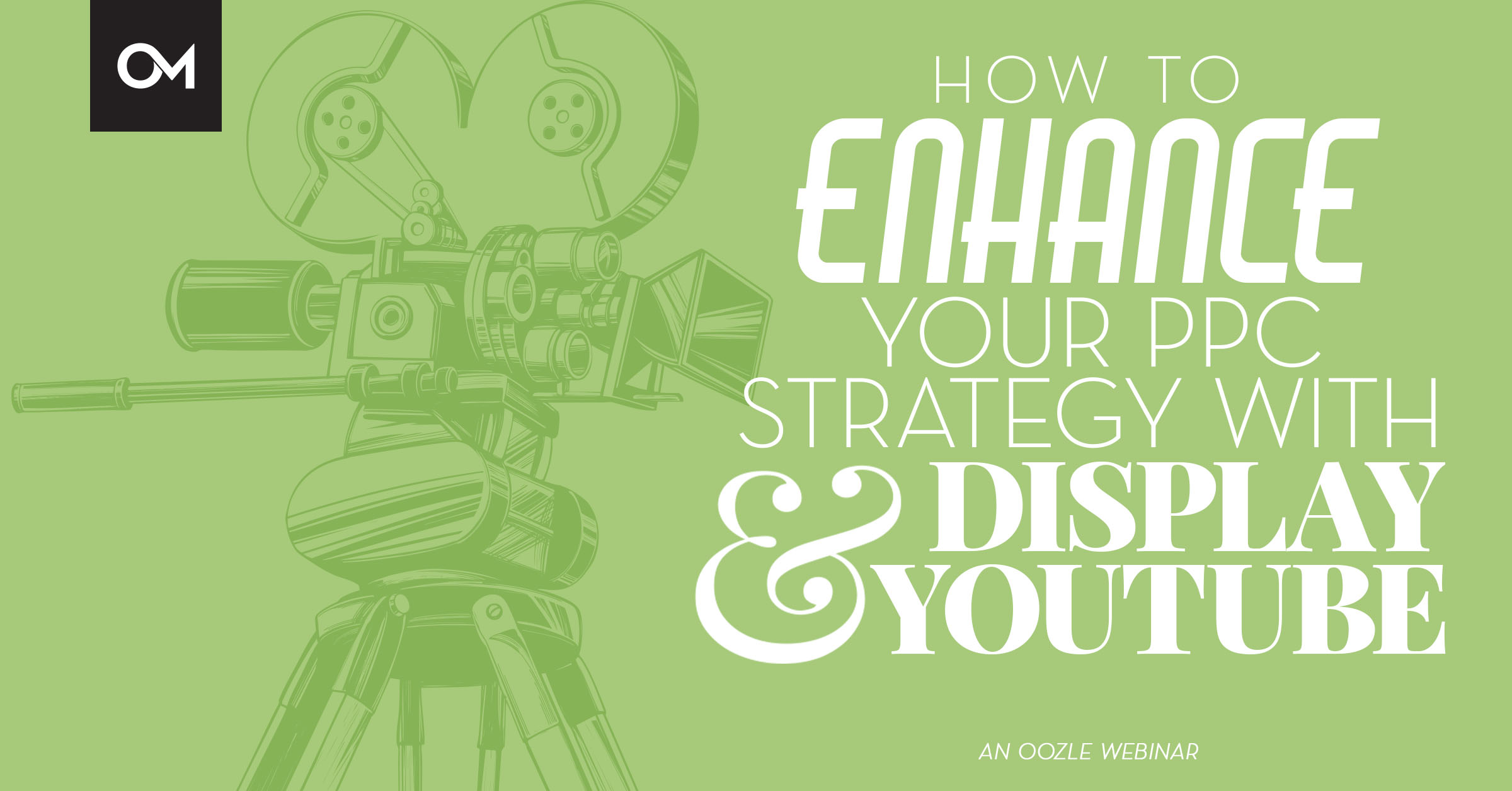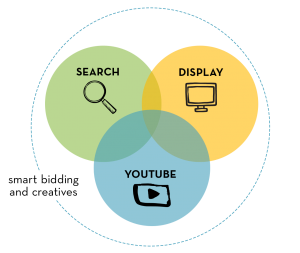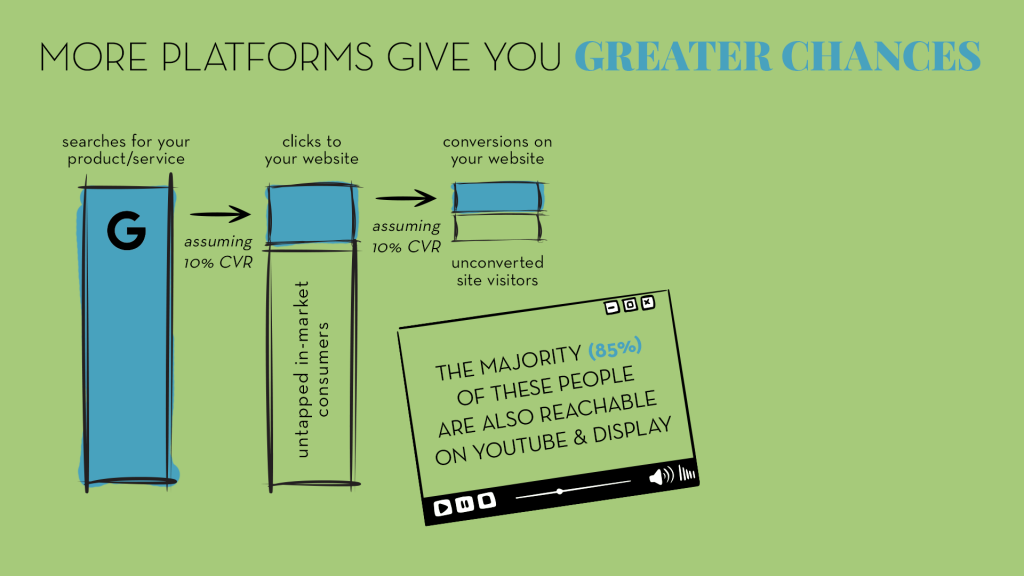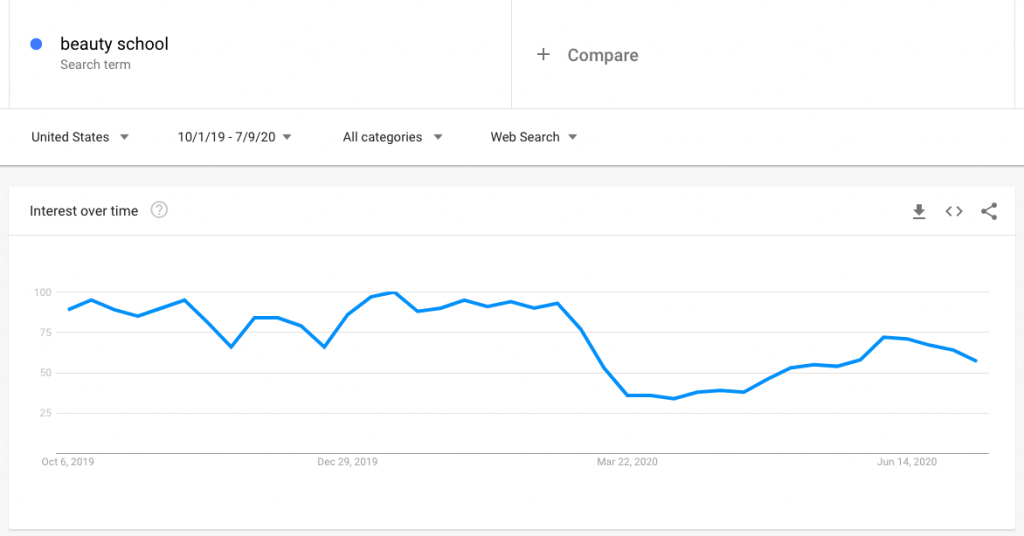How To Enhance Your PPC Strategy With Display & YouTube

Search ads have been the “bread & butter” of the PPC world for some time now. Serving a targeted ad to someone actively searching for a product or service you offer has proven to be an effective way to gather customers or leads. But, a search-only PPC strategy today is incomplete.
Adding display and video ads alongside the longstanding search ads will give you a more robust, holistic, sustainable, and wider-reaching marketing strategy. This will not only increase the number of conversions you have now, but it will pave the way for you to continue bringing in conversions down the road. As we often say at Oozle: “Be kind to your future self.”
Watch the Replay
Why Include Display and Video?
Augmenting your search campaigns with display and video campaigns is an investment for the future, but it can also amount to more conversions right now.
Display and video ads are more traditionally known for showing up for users even when they aren’t searching for you or your service or product. This is one way brands can generate awareness – they act like “billboards of the internet”.
Because these campaigns aren’t waiting for a search query, they can show ads to more people more often than a search ad. Think of this like the online equivalent of a salesperson knocking on doors or cold-calling potential leads. This in turn builds an audience of users who know your brand and can start moving towards the engagement and conversion phase of their journey. When consumers are ready, they will be more likely to convert on the brands they have become familiar with.
Consider now those users who have already seen your search ad. Assuming a 10% click-through rate and a 10% conversion rate, that’s still 99% of the initial audience who have seen your ad who need another chance to convert!
When advertisers combine display and video ads with their search campaigns, they are ensuring that they are covering their relevant audience more thoroughly. This not only leads to more future conversions, but it gives a larger portion of the market the chance to convert now.
We saw the importance of covering that relevant audience pretty plainly during March and April of this year. When the spread of the Coronavirus hit the US it disrupted not only schools, sports and lives, but also search patterns and internet behavior. For many of our beauty schools’ potential students, the future wasn’t certain enough to be focused on starting an education – especially if schools were temporarily closed. This meant that the normal search volume we could usually count on was suddenly very limited.
However, since web traffic overall was still high, we were able to serve display and video ads to those who fit within the relevant audiences even though they weren’t actively entering search queries. For a few uncertain weeks, we continued serving these ads, confident that when they were ready, those who had our brands top of mind would be knocking on our doors. And they were!
Once our schools had the capacity to continue enrolling, we saw a very quick uptick in conversions. By utilizing display and video ads, our clients stayed relevant and present within their markets even when people weren’t ready to convert. They were later able to gather conversions when people were ready.
There is another reason both display and video ads make a more robust overall strategy. The signals and data that are gathered from each platform can then be applied to the others, allowing your creatives and bidding strategies to more intelligently optimize.

How Should We Use Display and Video Marketing?
What Strategy Should I Use?
When starting out with display and video campaigns for the first time, our strategy is generally to start with a higher-performance strategy, targeting those who are most ready to become leads now. This typically means starting with a remarketing audience (users who have visited your site and shown interest but haven’t converted) or “similar audiences,” which are created by Google to resemble those who would be in your remarketing list but haven’t actually visited your site.
From there, there are many possible options to work into broader audiences. These broader groups may be a few steps away from converting into a lead, but will serve your objectives down the road as they become more familiar with your brand and what you offer.
If you’re a home service provider, this could mean targeting people who are in the market for their first home; they may not need your services yet, but the more familiar they are with your brand, the more likely they’ll come to you when they do.
One major factor in determining how and where to start your display and video campaigns is your budget. Not having enough budget behind any one of your campaigns could mean stunting its performance. Without enough budget, the traffic and data needed to make informed optimizations won’t be available, and the campaign will rely mostly on guesswork.
How Much Budget Will I Need To Start?
The recommended daily budget for display is 2-5x your search cost per acquisition (CPA), and for video, it’s 10-20x your CPA. If you’re going to optimize your campaigns for conversions, enough budget should be available to bring in multiple conversions per day. However, that makes the monthly budget quite high – higher than most businesses may be able to spend.
So, we’ve found that in our beauty school vertical, the minimum place to start with your display and video ad budget is equivalent to about 20-30% of your search budget. This will be enough to cover some of the untapped market and help keep your brand top-of-mind for your remarketing audience and other lower-funnel audiences, though your conversions may happen less frequently.
If you don’t have enough budget to introduce both display and video, choose the one that makes the most sense for your brand and objectives.
I Don’t Have Videos. What Can I Do?
Historically, creative assets have been the biggest barrier to entry for both display and video. That should no longer be the case. We have learned a lot about the kind of creative we can use for these ads and it’s not as complicated as it seems.
For video, there are tools available for creating simple and effective creative for various objectives, either through designers within an agency like ours, or through Google’s YouTube Video Builder.
Additionally, depending on what your video strategy looks like, you can create efficiencies within your video creative. Long-form videos can be used for an audience in the “consideration” phase, and then easily broken into pieces most relevant for audiences that are in the “awareness” phase or those who are ready to take action in the “decision” phase.
For example, you may have a full video tour of your location, complete with testimonials and words from your staff spanning a few minutes, which might work well for someone considering your brand among others. Those video assets can then be broken out and repurposed into distinct, shorter, more directed ads for specific audiences. You can use a clip of a testimonial for a remarketing audience, or a six-second word from your staff as a bumper ad to increase brand awareness.
As we create content for video ads, we are also able to use those videos within our responsive display ads. Responsive display ads are an ad format within Google Ads that allows us to supply a variety of simple image and video assets from which Google’s algorithm can make optimal combinations for individual users based on their signals and search patterns.
How Have We Seen Success?
We have some anonymized results of real clients who have seen success running display ads. The data below covers the month of May in 2020 and compares it to the same time period last year for two accounts. In both cases, these accounts increased their display budget, and in both cases we were able to see a change in our click-through rates and our conversion rates on search.
Case Study 1
Our first case study is a little bit hard to tease out. This account increased their budgets for search and display and saw an increased conversion rate in both products. They also saw a decreased cost per lead on display ads while maintaining a relatively consistent cost per lead on search ads.
Case Study 2
The second case study is very clear. Here, we saw an increase in this client’s display budget by over 2000% while the search budget stayed relatively the same. Their year-over-year data shows some pretty dramatic changes in their search performance.
The search campaign had a 12% decrease in cost per lead, and a 17% increase in conversion rate! The CPC also decreased while the CTR went up nearly 13%. And all of this while the display campaign brought in more leads at a higher rate and lower cost than it did at its lower budget!
Once you’ve made changes to your strategy and added display and/or video ads, it’s a good idea to monitor the effects it has on the other campaigns. After your new video and display ads have been added, make sure you give them enough time to gather sufficient data. But, keep an eye out for changes in click-through rates and conversion rates in your search campaigns and organic traffic that converts on your website.
If you notice any negative results or an extremely high cost per lead, you may need to reassess the targeting, ads, or strategy of your new campaigns. But, a good display and video strategy should lead to additional conversions now and help the future of your search campaigns.
Are You Making the Most of Your Paid Ads Strategy?
Adding display and video ads to your search ads is going to ensure that you are creating a more robust and long-term strategy for your business. The introduction of these two – or even one of the two – products will have a positive impact on the others, giving your account greater ability to draw from more bidding signals and thus, more intelligently optimizing your campaigns.
It will help your campaigns to convert more in the short term, and create audiences for you to remarket to in the long-term.
If you want to use your paid ads budget more effectively and have all the creative handled for you, get in touch with Oozle Media. As a Google Premier Partner, we have access to a number of resources and tools that can push your PPC to another level. Request your free audit and analysis to get started today!




